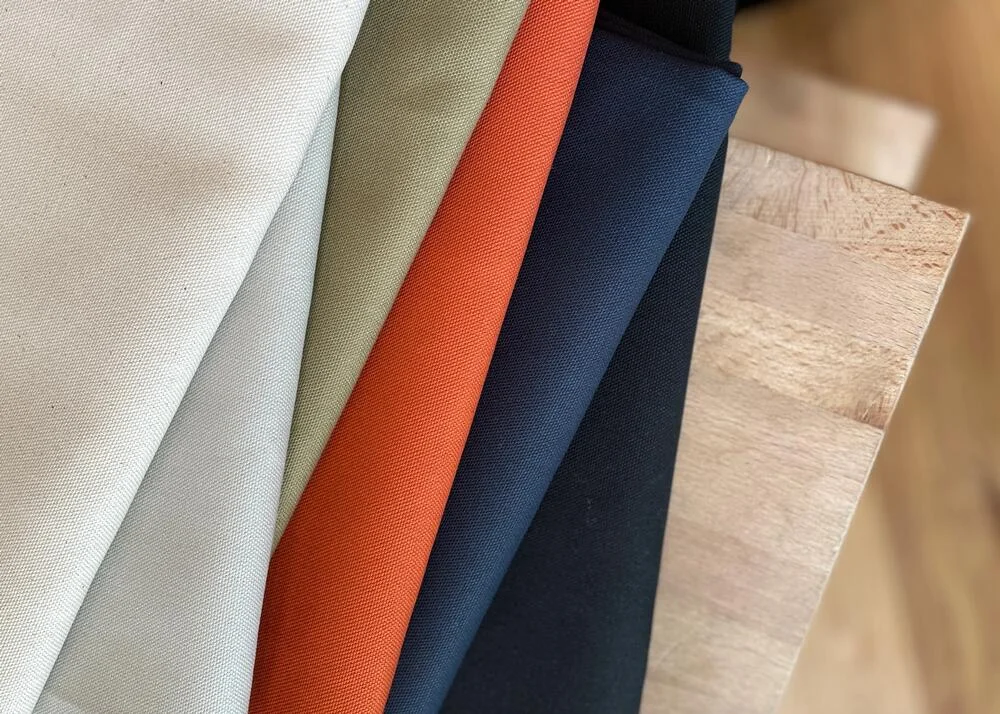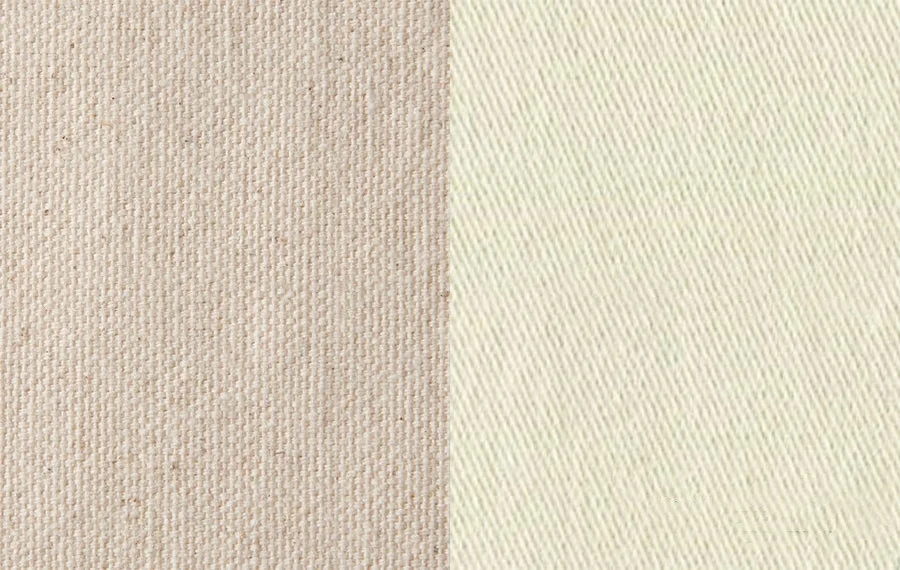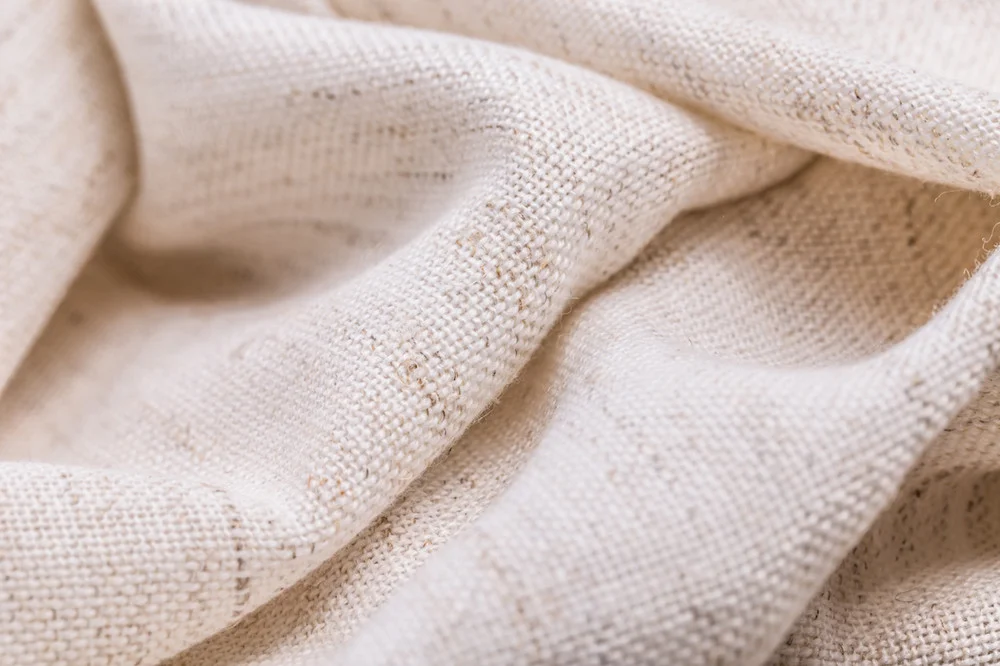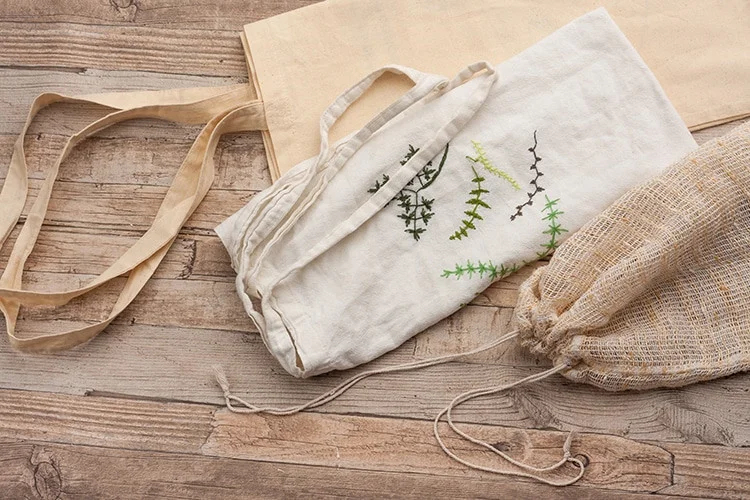When you embark on DIY projects, selecting the right fabric can elevate your creations from ordinary to exceptional. Among the choices available, duck fabric and canvas stand out for their durability and versatility. Each fabric has distinct qualities that influence its suitability for various DIY endeavors.
This detailed comparison of duck fabric versus canvas will equip you with the knowledge to confidently choose the best material for your next project, ensuring both practicality and aesthetic appeal.
What Is Duck Fabric?

Duck fabric, also known as duck cloth or duck canvas, is a durable woven textile primarily made from cotton. It is characterized by its tight, plain weave and sturdy structure, which impart exceptional strength and resilience.
Duck fabric comes in various weights and thicknesses, ranging from lightweight to heavy-duty variants. Commonly used in upholstery, bags, tents, and workwear, its versatility stems from its ability to withstand wear and tear while providing a smooth surface for printing or dyeing.
What Is Canvas?

Canvas is a sturdy and durable woven fabric traditionally made from cotton, although variations can include linen or synthetic fibers. It features a plain weave construction, resulting in a strong, tightly woven fabric that is resistant to tearing and abrasion.
Canvas comes in different weights and textures, ranging from lightweight for art canvases to heavy-duty for industrial applications and outdoor use. It is known for its versatility and is widely used in applications such as painting surfaces, tents, sails, bags, upholstery, and fashion accessories due to its strength, durability, and ability to be easily dyed or treated for water resistance.
Key Differences Between Duck Canvas VS Canvas
| Characteristic | Duck Canvas | Canvas |
|---|---|---|
| Weave Density | Very tight | Varies from loose to tight |
| Grading System | Numbered (1-12) | No standard grading |
| Weight | Heavier | Ranges from light to heavy |
| Durability | Exceptional | Varies depending on weight |
| Typical Uses | Demanding applications (workwear, outdoor gear) | Painting, crafts, less-demanding uses |
Duck Fabric VS Canvas: History
Duck fabric and canvas boast rich histories rooted in ancient textile traditions. Duck fabric, originating from the Dutch word “doek” for linen cloth, initially served as a sturdy sailcloth due to its tightly woven cotton fibers, offering durability for maritime use.
Canvas, derived from the Arabic “qanats,” evolved similarly with hemp and later cotton, becoming indispensable for sails, tents, and artistic canvases.
Both fabrics have adapted over time with technological advancements, expanding into diverse applications from fashion to industrial uses, embodying centuries of durability, versatility, and craftsmanship.
Duck Fabric VS Canvas: Material Composition And Construction

Duck fabric, primarily woven from cotton, features a tight plain weave that enhances its strength and durability. This construction method involves interlocking warp and weft threads closely together, resulting in a dense fabric structure that withstands wear and tear effectively.
Canvas, also typically woven from cotton but sometimes incorporating linen or synthetic fibers, share a plain weave construction but may vary in weight and texture. Its composition and weaving techniques influence its strength and durability, allowing for different applications ranging from lightweight artist canvases to heavy-duty industrial uses.
The impact of these differences is significant: duck fabric’s tighter weave and cotton composition contribute to its robustness, making it suitable for upholstery, bags, and outdoor gear where durability is crucial. In contrast, canvas’s versatility lies in its ability to adapt to various tasks, from painting surfaces to sturdy bags and tents, thanks to its durable yet flexible construction.
Duck Fabric VS Canvas: Strength And Durability

Duck fabric, known for its robust plain weave and often heavier weight, offers exceptional strength ideal for upholstery projects where durability is paramount. Its resilience makes it a reliable choice for outdoor use, resisting abrasion and maintaining integrity over time.
Canvas, on the other hand, also renowned for its tight plain weave, provides durability across a wide range of applications. It excels in projects requiring a balance of strength and flexibility, such as in making tents or sturdy bags. Its longevity and resistance to wear and tear ensure lasting performance in demanding environments.
Comparatively, while duck fabric may excel in heavy-duty applications due to its thicker weave and cotton composition, canvas offers versatility across lighter to medium-duty tasks, benefiting from its durable construction and ability to withstand frequent use without compromising strength.
Duck Fabric VS Canvas: Water Resistance And Weatherability

Duck fabric, typically woven tightly from cotton fibers, offers moderate water resistance. Its dense weave and natural fibers provide some protection against light rain or moisture, making it suitable for indoor upholstery and sturdy bags where occasional exposure to moisture is expected.
Canvas, also woven primarily from cotton but sometimes blended with synthetic fibers, exhibits varying degrees of water resistance depending on its weight and treatment. Heavy-duty canvas, often treated with water-repellent finishes or coatings, can withstand more substantial exposure to moisture. This makes it ideal for outdoor applications such as tents, awnings, and boat covers, where durability and weather resistance are paramount.
If your project involves frequent exposure to moisture or requires outdoor durability, a canvas with water-resistant treatments or heavier weights may be the better choice. Conversely, for indoor or lighter-duty projects where occasional moisture resistance suffices, duck fabric’s inherent properties provide a reliable option.
Duck Fabric VS Canvas: Ease Of Handling And Sewing

Duck fabric, with its tightly woven cotton construction, offers substantial durability and strength but may require sharper tools for cutting due to its dense fibers. When sewing, use heavy-duty needles and consider pre-washing to reduce shrinkage and ease manipulation.
Canvas, known for its sturdy plain weave and versatility, provides moderate ease of cutting and sewing, depending on its weight. Lighter canvases are more manageable for intricate projects like bags and upholstery, while heavier canvases may require robust sewing machines and thicker needles to handle their density effectively.
Consider using clips or pins to manage layers and ensure even stitches, particularly in thicker materials. To work effectively with duck fabric or canvas, take time to select appropriate tools and techniques. Sharp scissors or rotary cutters and quality threads are essential for clean cuts and durable seams.
Preparing fabric edges with pinking shears or serging can prevent fraying, enhancing the overall finish of your project. Understanding these nuances allows you to leverage the strengths of each fabric type effectively, ensuring smooth handling and precise sewing in your DIY or professional endeavors.
Duck Fabric VS Canvas: Cost Considerations
Duck fabric, woven tightly from cotton fibers, often commands a higher price due to its durability and robustness. The quality of the cotton and the intricacy of the weave can further impact its cost, making it a preferred choice for heavy-duty applications like upholstery and outdoor gear where longevity is crucial.
Canvas, available in various weights and compositions, offers a broader range of pricing options. Lighter canvases are generally more affordable and suitable for artistic purposes or lightweight projects. In contrast, heavier canvases, especially those treated for water resistance or made from premium fibers like linen or synthetic blends, may cost more but provide added durability and versatility for demanding applications such as marine use or industrial covers.
Considering value for money involves weighing these cost differences against your project’s specific requirements, for budget-conscious projects or those with moderate durability needs, lighter canvases or basic duck fabric variants offer cost-effective solutions without compromising on quality.
However, investing in higher-quality materials can pay off in the long run for projects requiring superior strength, longevity, and performance under challenging conditions.
Duck Fabric VS Canvas: Applications And Projects
DIY Projects

As you delve into DIY projects, choosing the right fabric—whether duck fabric or canvas—can elevate your creations to new heights of durability and style. Duck fabric, prized for its robust weave and cotton composition, excels in projects requiring strength and longevity. Ideal uses include crafting sturdy tote bags, upholstering furniture for lasting comfort, and creating outdoor gear like backpacks and tarps where durability is essential.
Canvas, with its versatile plain weave and range of weights, offers flexibility across various DIY endeavors. Lighter canvases are perfect for artistic pursuits such as painting surfaces or crafting stylish pouches and wallets. Heavier canvases, treated for water resistance and often used in marine environments, shine in projects like making durable tents, constructing patio furniture covers, and fashioning utility aprons for workshop use.
Commercial Applications
In commercial and industrial settings, selecting the right fabric—be it duck fabric or canvas—can significantly impact performance and durability across various industries.
Duck fabric, renowned for its dense weave and cotton strength, finds extensive use in industries requiring robust materials. It excels in applications such as manufacturing heavy-duty workwear and protective clothing, constructing durable covers for industrial machinery, and producing reliable conveyor belts and filtration systems.
Canvas, with its versatile plain weave and adaptable nature, serves a multitude of commercial purposes. Lighter canvases are favored in artistic fields for creating durable yet flexible canvases for painting and printing. In heavier weights, canvas shines in industries requiring weather-resistant materials, such as manufacturing awnings, constructing temporary shelters for construction sites, and crafting robust sails and covers for marine and transportation sectors.
The advantages of duck fabric and canvas in commercial settings lie in their durability, versatility, and ability to withstand rigorous use and environmental challenges. Whether enhancing worker safety with durable clothing or protecting valuable equipment with sturdy covers, these fabrics offer reliability and performance that meet the demanding needs of diverse industries.
Conclusion
As you wrap up this comparison between duck fabric and canvas, you’ve discovered their unique strengths and applications. Duck fabric shines in durability and resilience, ideal for tough projects like outdoor gear. Canvas offers versatility and artistic appeal, suitable for a wide range of uses from painting to home décor.
Whether you prioritize strength or creative flexibility, choosing the right fabric depends on understanding your project’s specific demands. Armed with this knowledge, you can confidently select the fabric that best fits your DIY or professional needs.
FAQ
1. What is duck fabric?
Duck fabric, also known as duck canvas, is a sturdy woven textile primarily made from cotton. It features a tight plain weave that enhances its strength and durability.
2. What is canvas fabric?
Canvas is a durable fabric traditionally made from cotton, though sometimes linen or synthetic fibers are used. It is known for its plain weave construction and versatility.
3. What is cotton duck fabric used for?
Cotton duck fabric is used for upholstery, bags, outdoor gear like tents and tarps, workwear, industrial covers, art canvases, and home decor.
4. What is canvas fabric used for?
Canvas fabric is used for painting surfaces, bags, tents, sails, upholstery, fashion accessories, and industrial applications due to its durability and versatility.
5. Is duck fabric waterproof?
Duck fabric is not inherently waterproof. While it is tightly woven and durable, it typically requires additional treatments such as waxing or coating with waterproofing agents to enhance its water resistance. These treatments can make duck fabric more suitable for outdoor applications where protection from moisture is essential.
6. How do duck fabric and canvas differ in use?
Duck fabric is commonly used in heavy-duty applications such as workwear and industrial covers. Canvas, on the other hand, is versatile, and used in art canvases, fashion, and lighter-duty applications.
7. Which fabric is better for outdoor use?
Duck fabric, with its tighter weave and durability, is often preferred for outdoor applications where resistance to wear and tear is crucial.
8. Can canvas be used for artistic purposes?
Yes, canvas is widely used in art for painting surfaces due to its strength and smooth texture.
9. What factors should I consider when choosing between duck fabric and canvas?
Consider factors like intended use, durability requirements, and aesthetic preferences. Duck fabric is best for heavy-duty applications, while canvas offers versatility and artistic potential.
10. Are there different grades of duck fabric and canvas?
Duck fabric is graded numerically (e.g., #8 duck, #10 duck) based on weight and weave density. Canvas does not have a standard grading system but varies widely in weight and texture.
